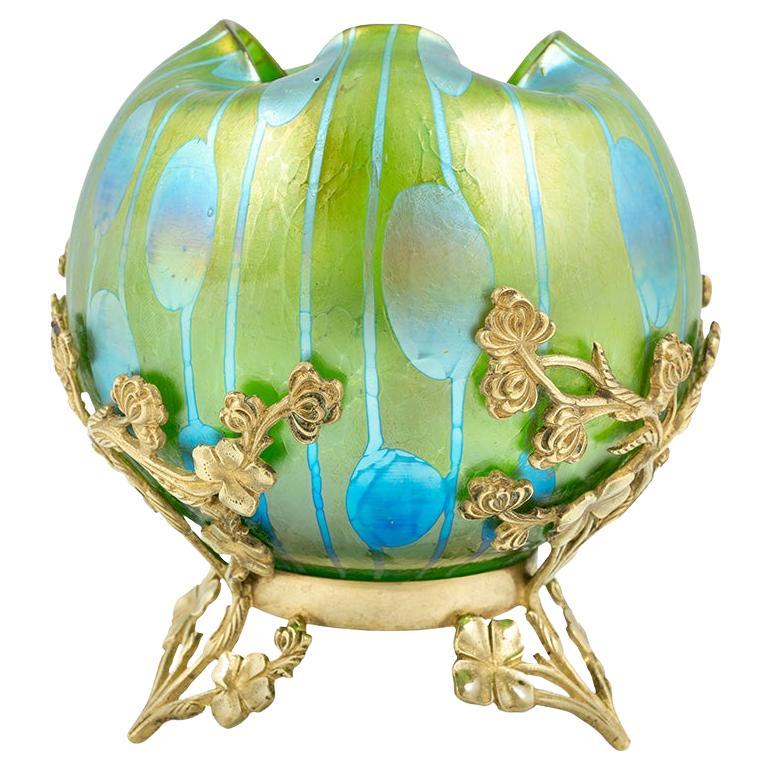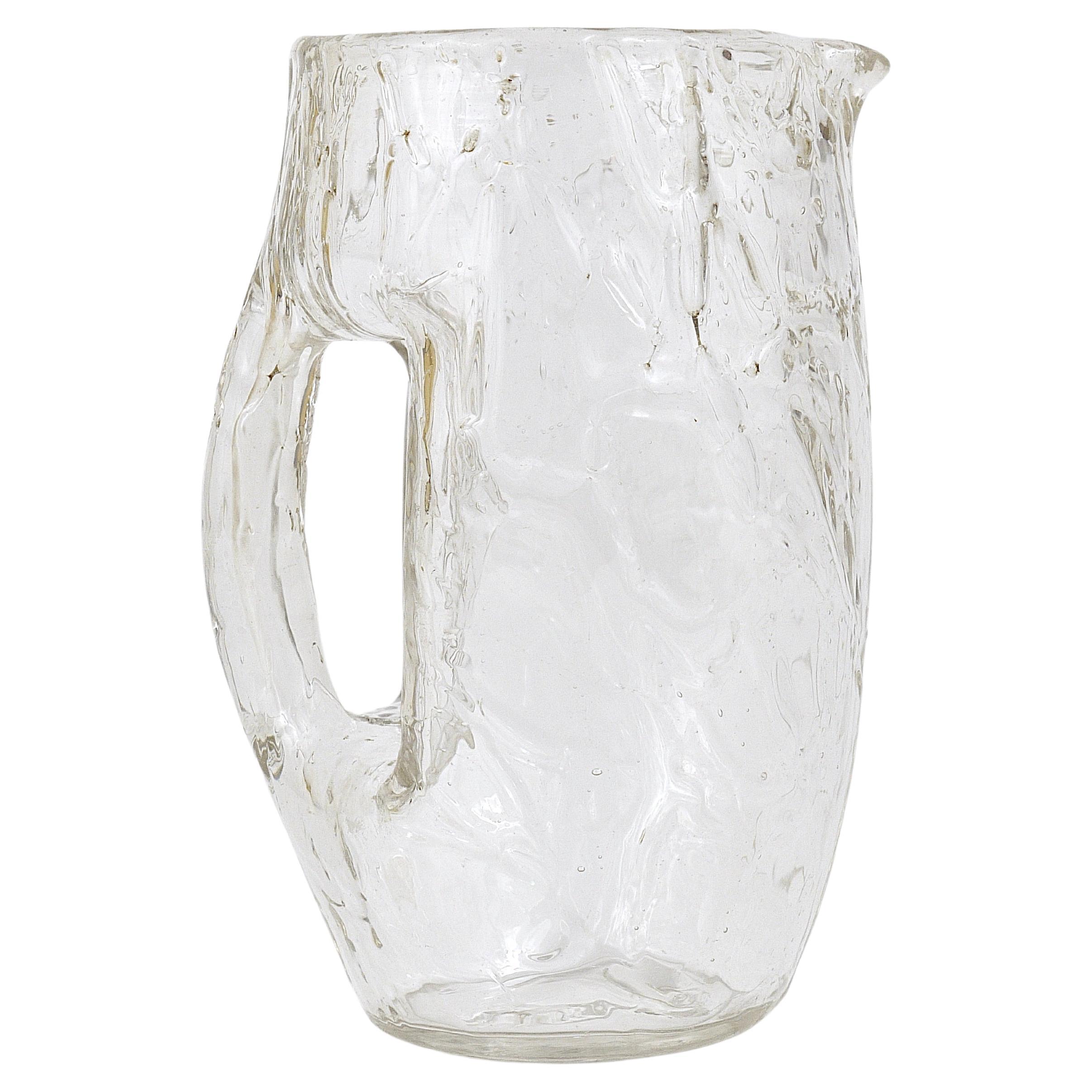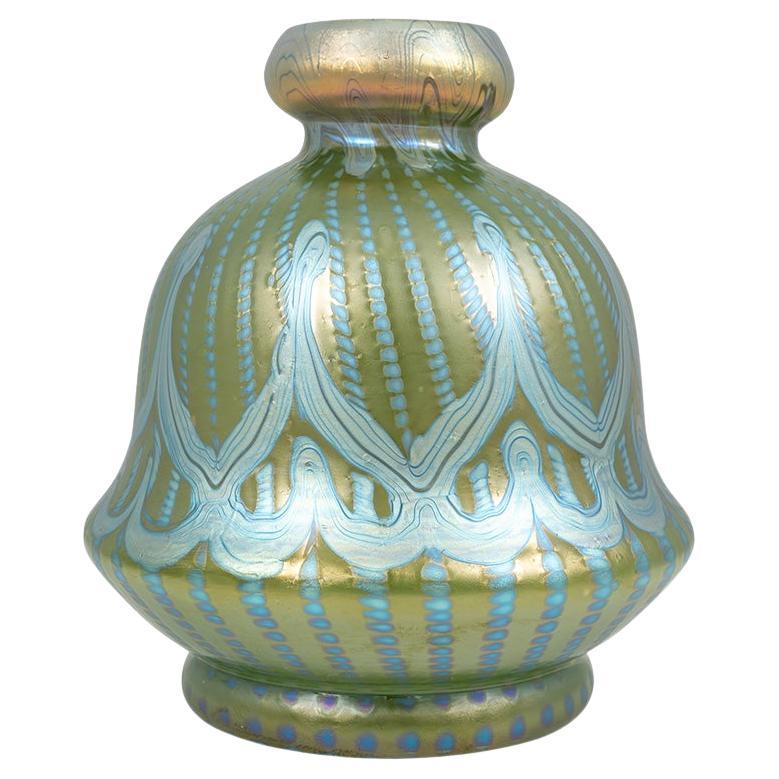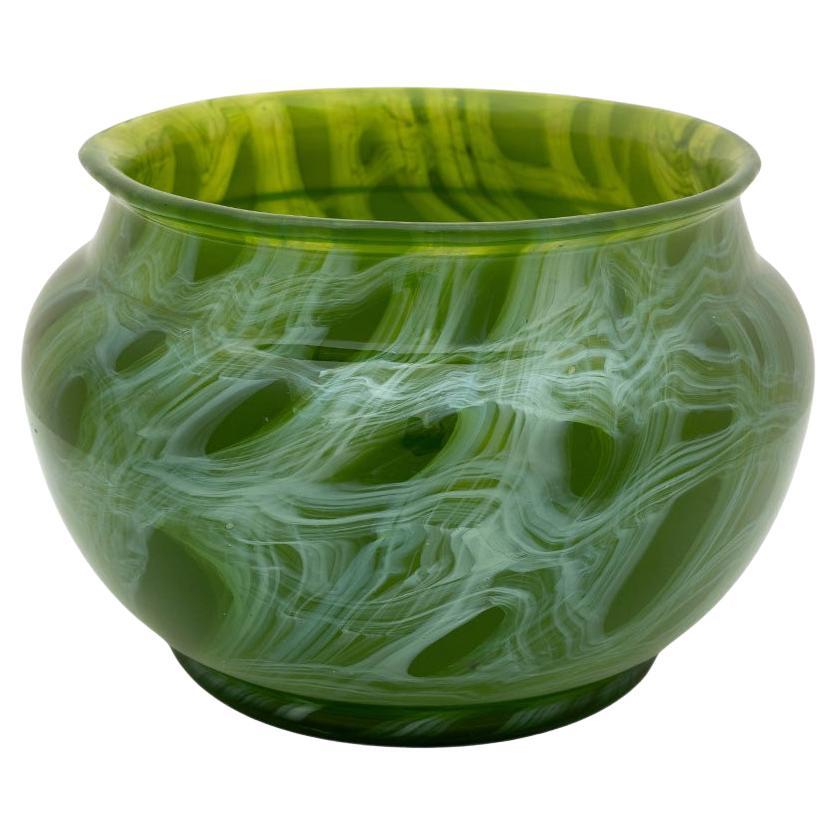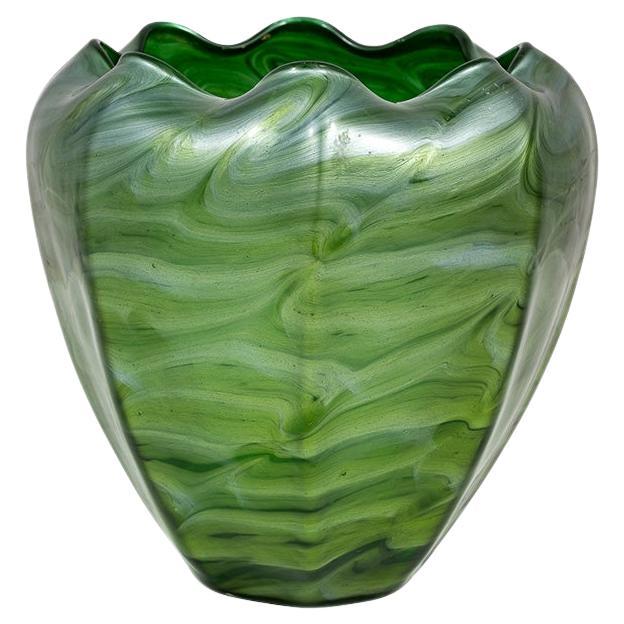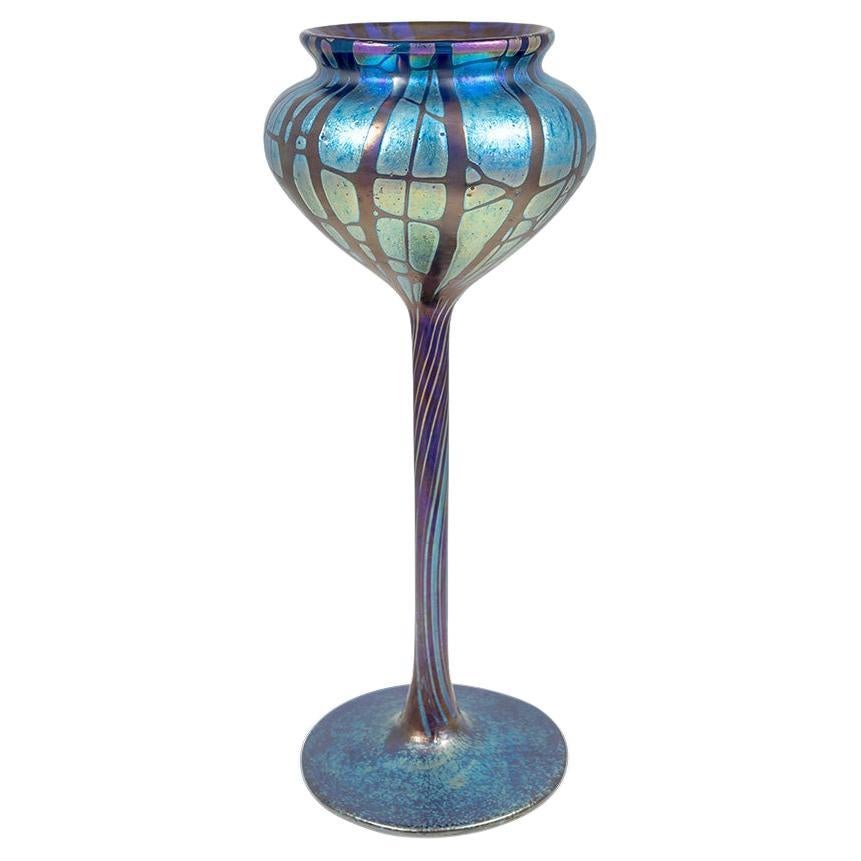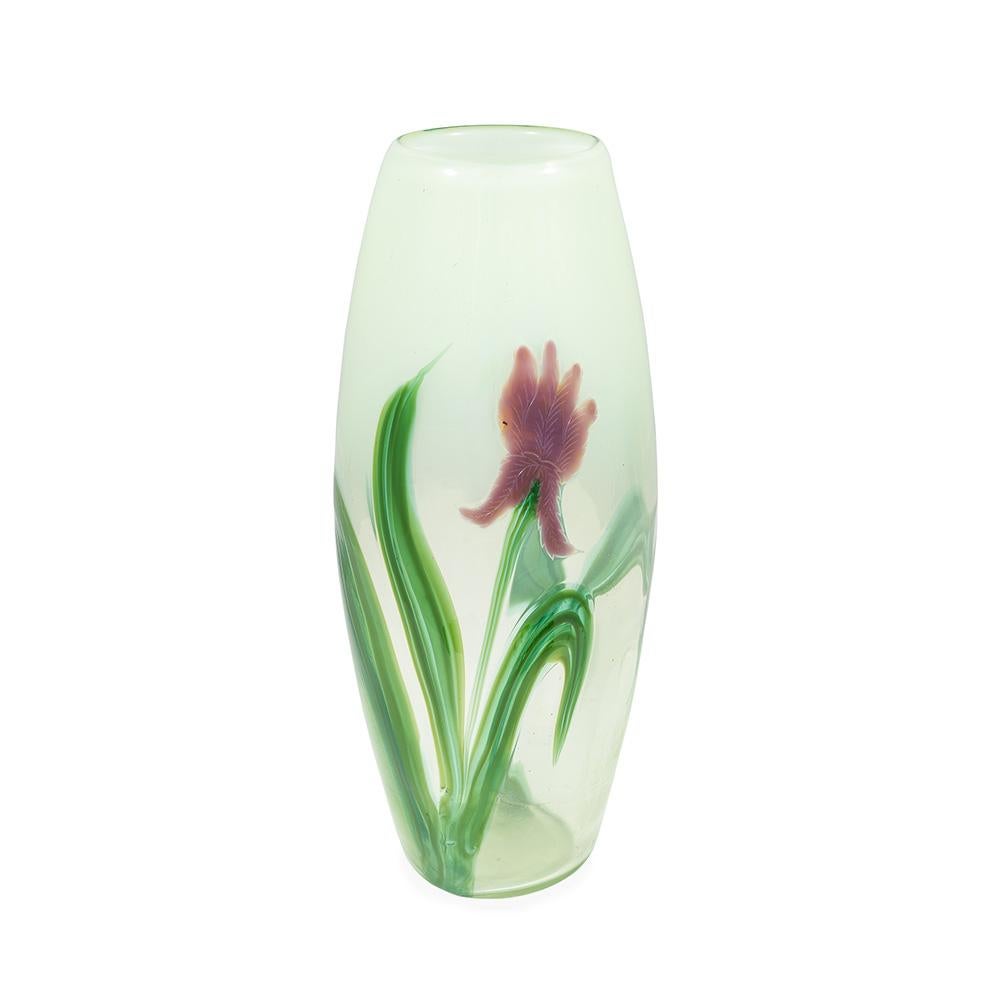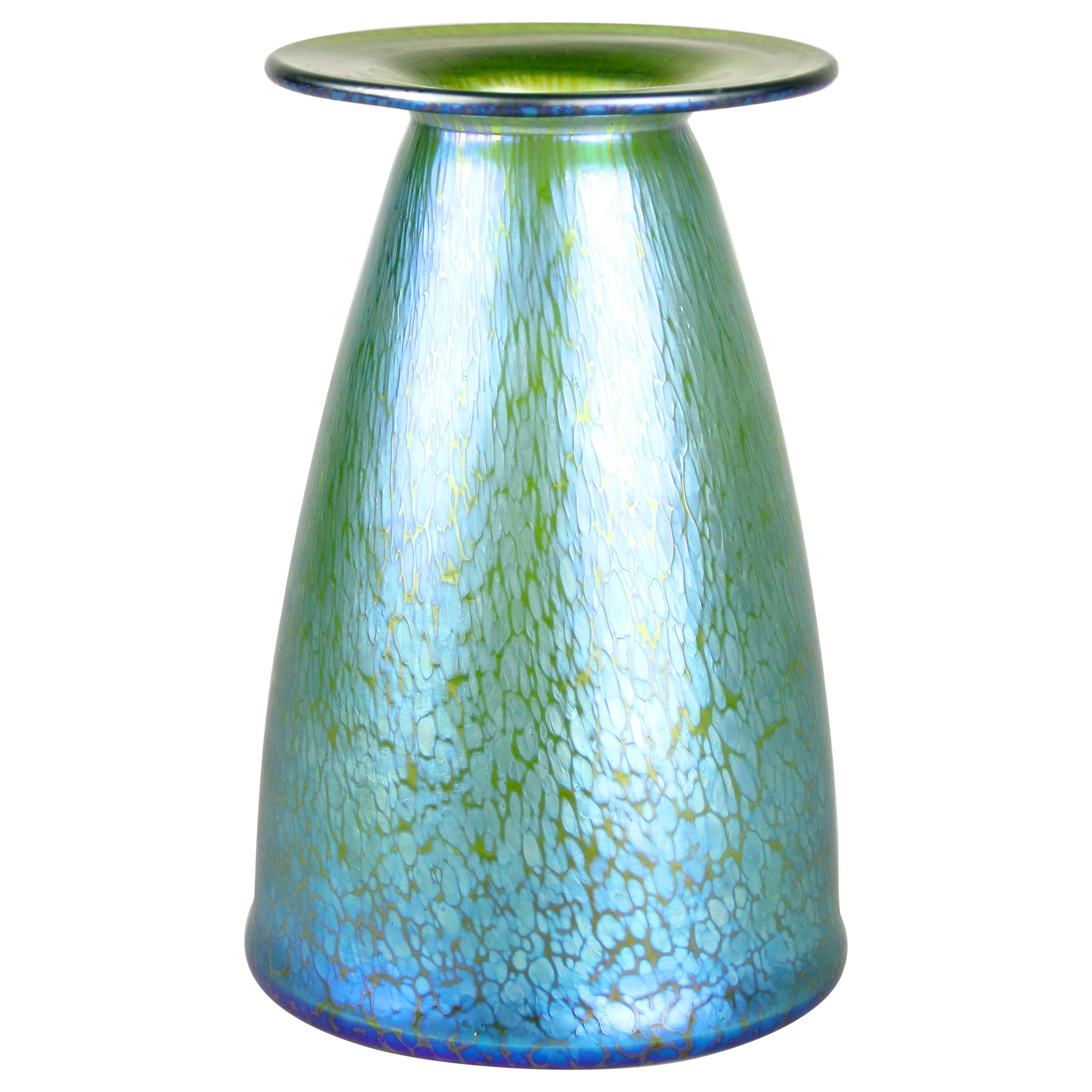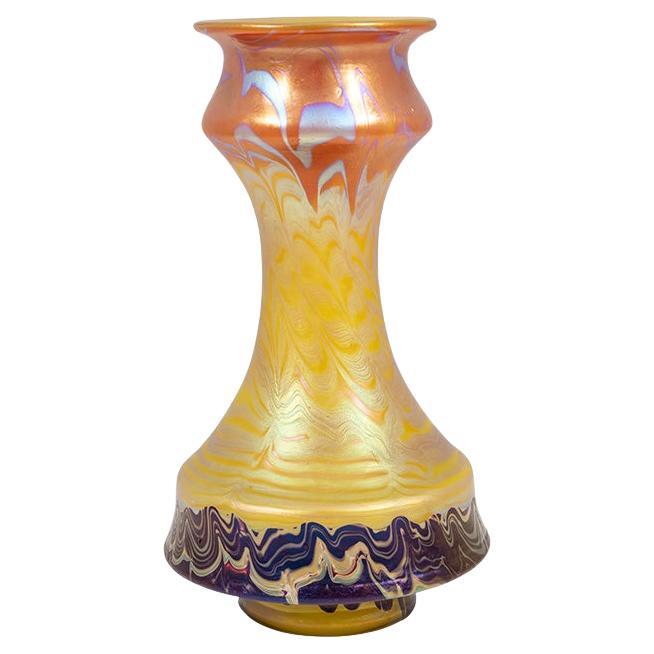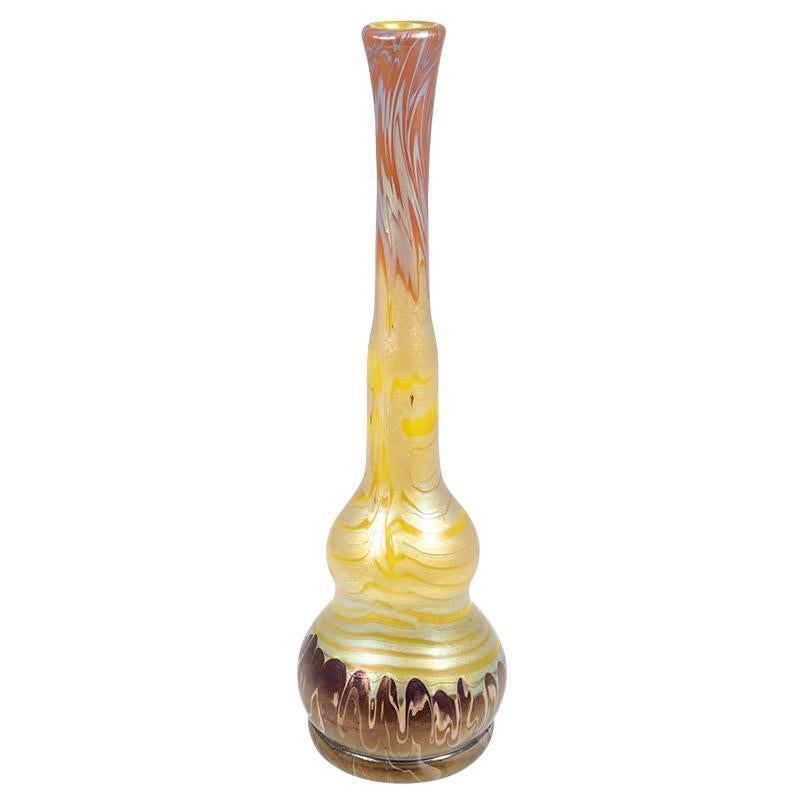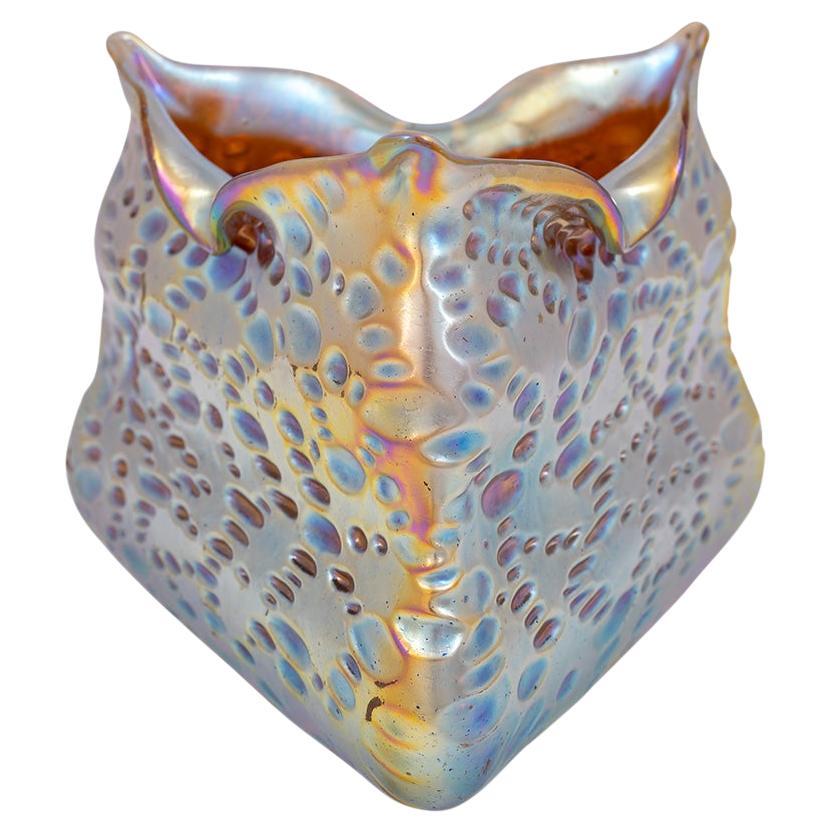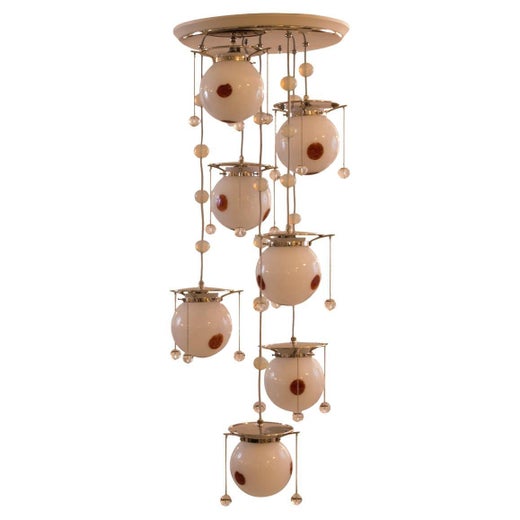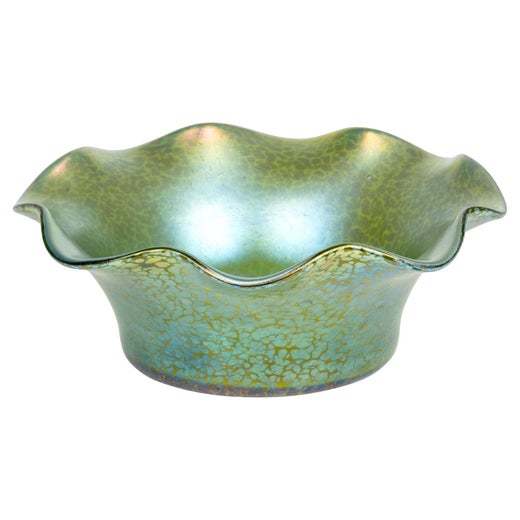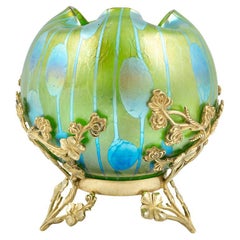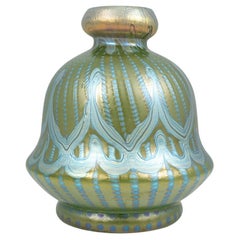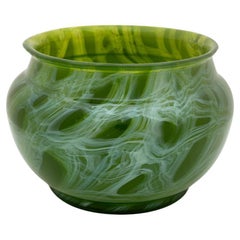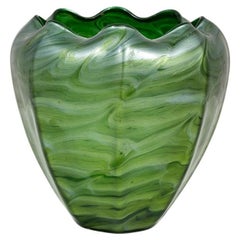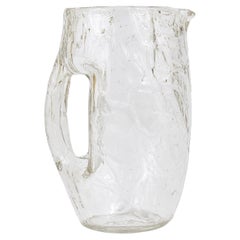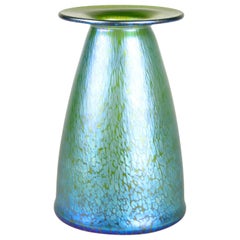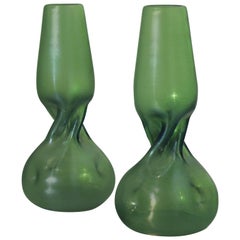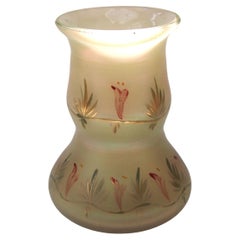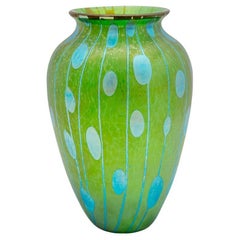
Bohemian Glass Vase Loetz Koloman Moser circa 1900 Blue Green
View Similar Items
Bohemian Glass Vase Loetz Koloman Moser circa 1900 Blue Green
About the Item
- Creator:Loetz Glass (Manufacturer),Koloman Moser (Designer)
- Dimensions:Height: 7.29 in (18.5 cm)Diameter: 4.73 in (12 cm)
- Style:Jugendstil (Of the Period)
- Materials and Techniques:
- Place of Origin:
- Period:1900-1909
- Date of Manufacture:1900
- Condition:Wear consistent with age and use.
- Seller Location:Klosterneuburg, AT
- Reference Number:Seller: Inventarnr. 9541stDibs: LU5830238114522
Koloman Moser
Born in Vienna in 1868, Koloman Moser briefly attended trade school, honoring his father’s wish to see him in commerce. But he soon surrendered to his artistic inclinations, enrolling in 1885 in Vienna’s Academy of Fine Arts, where he studied painting.
When his father died unexpectedly in 1888, leaving the family in financial straits, Moser (1868–1918) helped out by doing illustrations for books and magazines. Meanwhile, he continued his painting studies, at the academy and then at the School of Arts and Crafts, starting in 1892. That was also the year that Moser, along with other young artists revolting against the Viennese art world’s devotion to naturalism, formed the Siebner Club, the precursor to the Vienna Secession.
Moser’s introduction during his last term at school to Gustav Klimt’s Allegory of Sculpture proved a turning point for the young artist. Christian Witt-Dörring, guest curator of the 2018–19 exhibition “Koloman Moser: Universal Artist between Gustav Klimt and Josef Hoffmann” at the MAK in Vienna, noted a change in the artist’s drawing style. “Primarily inspired by the art of Japan, [Klimt] introduces new paper sizes, fragmented image details, and an emphasis on the line as opposed to the surface,” wrote Witt-Dörring in the exhibition’s catalogue.
A year later, in 1897, Moser together with Klimt, Carl Moll, Joseph Olbrich and Josef Hoffmann founded the Vienna Secession, a union of artists and designers determined to upend Austria’s artistic conservatism. The members were committed to making total works of art: Gesamtkunstwerken. Looking to the English Arts and Crafts Movement, with its guiding principle of unity of the arts, the group attempted to bring art back into everyday life and introduce a local modernism to fin-de-siècle Vienna. Moser, whose membership in the club also afforded him entry into upper-class Viennese society, turned his back on oil painting and forged ahead with Gesamtkunstwerk.
Moser created everything from exhibition design to facade ornamentation for the Secession Building, to graphic materials. Moser also produced posters and advertisements in his “modern style” for various companies. In 1898, he presented his first decor pieces, including hand-knotted rugs and cushion covers. In 1899, Moser began what would become a lifelong professorship at the School of Arts and Crafts. His repertoire now expanded to include furniture, ceramics and patterns like his trademark checkerboard design. He also moved into scenography and fashion and established himself as an interior designer.
The artist decorated his own home in 1902, after which he received a series of important commissions, notably the villa of textile industrialist Fritz Waerndorfer. It was Waerndorfer who provided the financial support that enabled Moser and Hoffmann in 1903 to found the Wiener Werkstätte, a platform for fully realizing their ideal of Gesamtkunstwerk. Two years later, Moser married Edith Mautner von Markhof, the daughter to one of Austria’s great industrial barons, and his work thrived.
In 1907, the Wiener Werkstätte ran into financial trouble. Losing faith in the unity of the arts and disillusioned with the group’s dependency on wealthy patrons like Waerndorfer, Moser left the Werkstätte. He returned to his original discipline, painting, which he continued to practice until his untimely death from cancer, in 1918.
Today, Koloman Moser’s work, from his metal vases to his jewelry to his interiors, remains sought-after and revered. Browse Moser's radically modern creations at 1stDibs.
Loetz Glass
Best known to collectors for their magnificent Marmoriertes and Phänomen glass creations, the Loetz Glass company was a leading Art Nouveau producer of fine glass vases, bowls and other decorative objects through the mid-19th and early 20th centuries.
Shortly before his death in 1855, attorney Frank Gerstner transferred sole ownership of his glassworks company to his wife Susanne. The company, which was founded in what is now the Czech Republic in 1836 by Johann Eisner, was renamed Johann Loetz Witwe by Susanne Gerstner as a tribute to her late husband who preceded Gerstner, a glassmaker named Johann Loetz (Loetz was also known as Johann Lötz).
For 20 years, Gerstner led the company, expanding its manufacturing and distribution capacity. It proved profitable, but the glassworks' popularity didn't start gaining significant momentum until after Gerstner transferred sole ownership to her grandson Maximilian von Spaun in 1879.
Von Spaun and designer Eduard Prochaska developed innovative techniques and solutions for reproducing historical styles of decorative glass objects, such as the very popular marbled Marmoriertes glass — a technique that lends glass an appearance that is similar to semi-precious stones such as onyx or malachite. Under von Spaun’s leadership, the firm’s works garnered them success in Brussels, Vienna and Munich, and Johann Loetz Witwe won awards at the Paris World Exposition in 1889. In 1897 von Spaun first saw Favrile glass in Bohemia and Vienna.
The work in Favrile glass, a type of iridescent art glass that had recently been developed and patented by Louis Comfort Tiffany, founder of iconic American multimedia decorative-arts manufactory Tiffany Studios, inspired von Spaun to explore the era’s burgeoning Art Nouveau style — or, as the firm was established in a German-speaking region, the Jugendstil style.
The company partnered with designers Hans Bolek, Franz Hofstötter and Marie Kirschner and thrived until von Spaun passed it down to his son, Maximilian Robert.
With the Art Deco style taking shape around the world, the company was unable or unwilling to adapt to change. Loetz Glass collaborated with influential names in architecture and design, including the likes of Josef Hoffmann, a central figure in the evolution of modern design and a founder of the Vienna Secession. Unfortunately, the glassworks’ partnerships did them little good, and the company’s mounting financial problems proved difficult to navigate. Two World Wars and several major fires at the glassworks took their toll on the firm, and in 1947 the Loetz Glass Company closed its doors for good.
Today the exquisite glass produced by Loetz Glass Company remains prized by collectors and enthusiasts alike.
On 1stDibs, find antique Loetz Glass Company glassware, decorative objects and lighting.
More From This Seller
View AllEarly 20th Century Austrian Jugendstil Glass
Glass
Early 20th Century Austrian Jugendstil Glass
Glass
Early 20th Century Austrian Jugendstil Glass
Art Glass, Blown Glass
Early 20th Century Austrian Jugendstil Glass
Art Glass, Blown Glass
Early 20th Century Austrian Jugendstil Glass
Glass
Early 20th Century Austrian Jugendstil Glass
Glass
You May Also Like
Antique Early 1900s Czech Art Nouveau Glass
Crystal
Early 20th Century Czech Art Nouveau Glass
Blown Glass
Early 20th Century Unknown Art Nouveau Glass
Glass
Antique Early 1900s Czech Art Nouveau Glass
Art Glass
Antique Early 1900s Czech Art Nouveau Glass
Art Glass
Antique Early 1900s Czech Art Nouveau Glass
Art Glass
